"Motor-racing is more than just cars going around in circles, it is a community bound by the love of what it is partaking in. In this sense it is almost like a family. In light of this we thought we’"

We are Family: Car Ads from the ‘50s, ‘60s and ‘70s
From the futuristic Fifties, through the sincere Sixties, to the sexist Seventies, ads for family cars took the more creative road as the decades rolled by
As long as cars have filled the highways and byways, drivers have been bombarded with advertisements selling the virtues of our four-wheeled friends. The 1920s, 1930s and 1940s pushed cars advertised by women in cloche hats and fur-lined coats.
Post World War II, the 1950s continued the previous decades’ creative optimism and glamour. Stylised illustrations painted cars as much more shapely and rakish than they actually were, while in the US, it was all fins, space travel, and couples dolled up in their finery. ‘They’ll know you’ve arrived when you drive up in an Edsel’ proclaimed one ad, while another boldly stated, ‘They’re driving the biggest thrill of the trip’, and pictured a couple in a futuristic-looking Pontiac ’56 Strato-Streak.
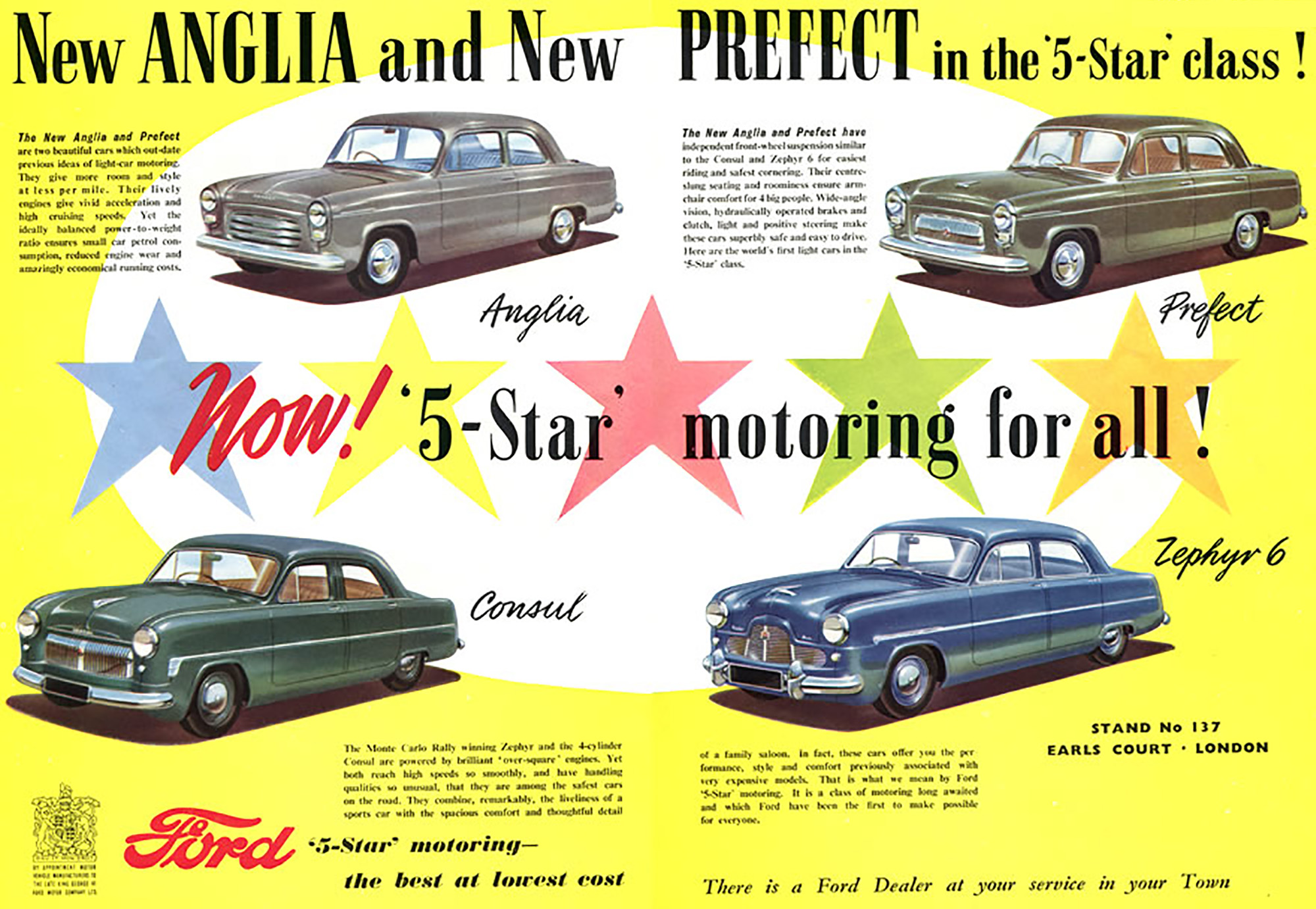
In the UK, things were a little different. Yes, the two-tone family cars were swallowing a big share of the market, but unlike their US compatriots, the saloons in more conservative Britain were advertised in picnic spots with cavorting couples, or by the same misleading drawings which gave a false impression of the car. Ford’s range of 1953 looked much more sleek in the ad drawings, the Anglia and Prefect actually a little more stunted in real-life.
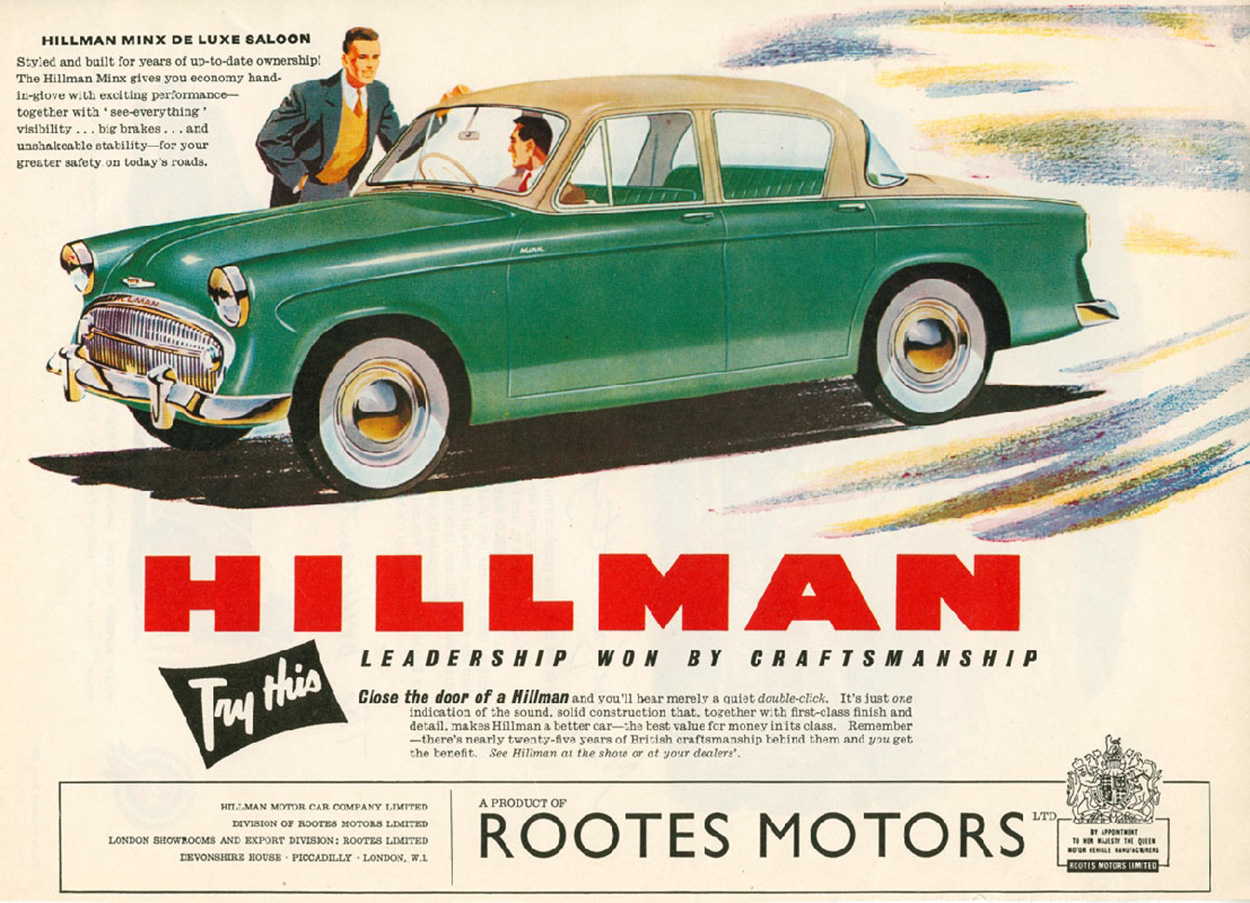
Technology and excitement were key selling messages. The Hillman Minx De Luxe Saloon was ‘designed and built for years of up-to-date ownership,’ along with ‘economy hand-in-glove and exciting performance’, and Ford promised that the rakish and US-inspired 1959 Anglia was ‘the world’s most exciting light car’. And considering women had enjoyed the right to vote for at least three decades, sexism was still very rife, with driving seen as very much of a ‘man’s’ pursuit. Wolseley’s ads carried headlines such as ‘I think she’s a beauty, but I wouldn’t call her dear’. Opportunities for women drivers were definitely not equal.

With the advent of more widespread use of colour and photography, the 1960s dawned brighter and bolder. And although messages got sexier, economy and value for money also ruled the roost. ‘Go gay and sing’, screamed a 1963 advert for the Ford Cortina (nowadays that would mean something totally different), and three years later, cost was still the Cortina’s watchword, the best-seller being ‘More for your money’. Elsewhere, Vauxhall didn’t beat around the bush, stating ‘Marvellous cars, these new Vauxhalls!’, while the 1961 Victor promised a life-changing experience which pre-dates all those ‘lifestyle’ SUVs of today: ‘Own a wonderful world, own a Vauxhall!’
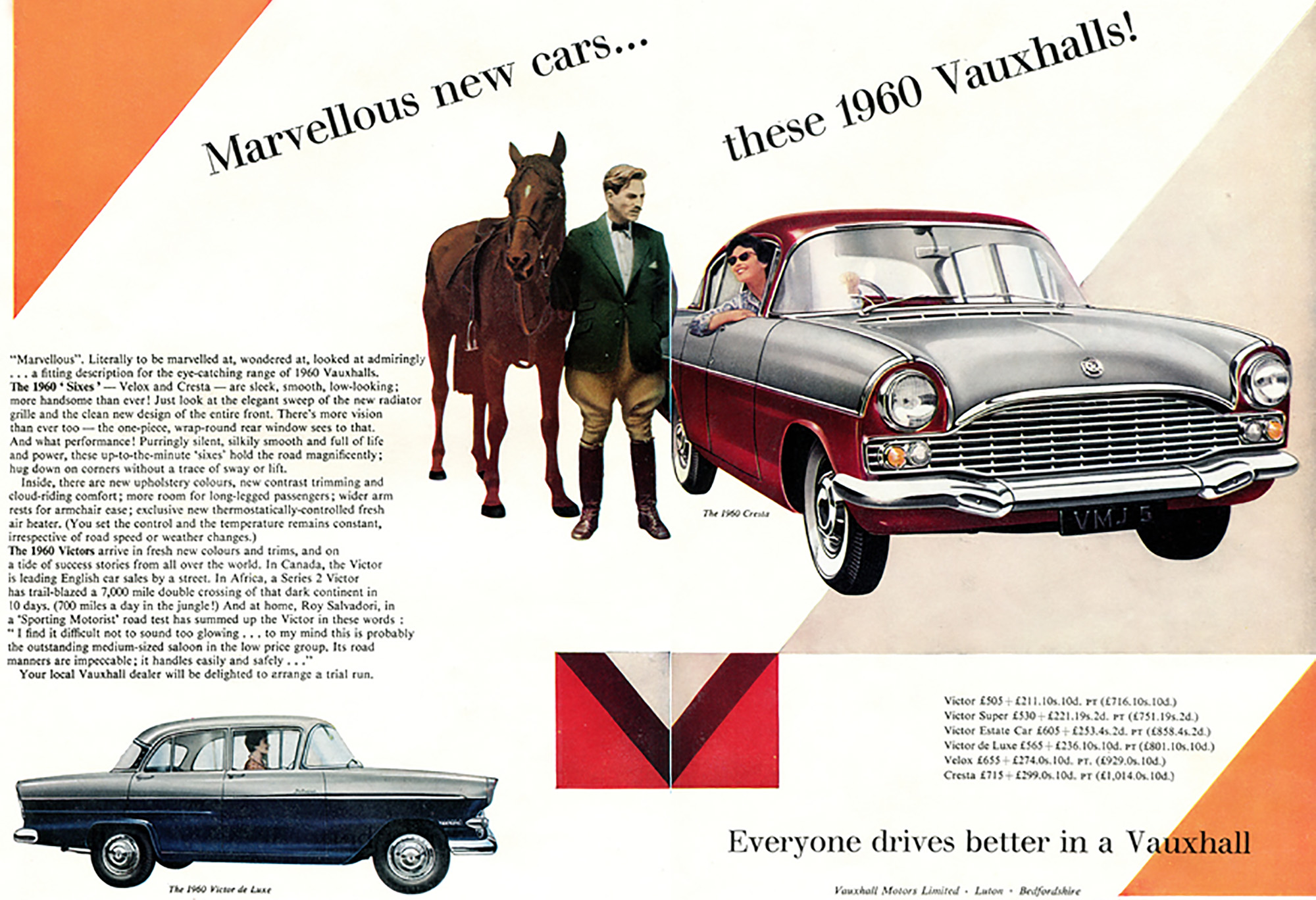
At the other end of the economy scale, luxury permeated through the car advertising world, too. Wolseley promised ‘Only as a 15/60 owner can you fully appreciate the host of luxury features’, also stating that ‘There’s something special about a Wolseley 15/60 holiday’, encouraging taking the car en vacances like a member of the family. The Rootes Group encouraged potential Chamois and Vogue drivers to ‘Step up in the world in a Singer and settle back in luxury’, while the Rover 3-Litre guaranteed ‘Swift, silent power and spacious luxury’. Nice, but perhaps a little worthy.
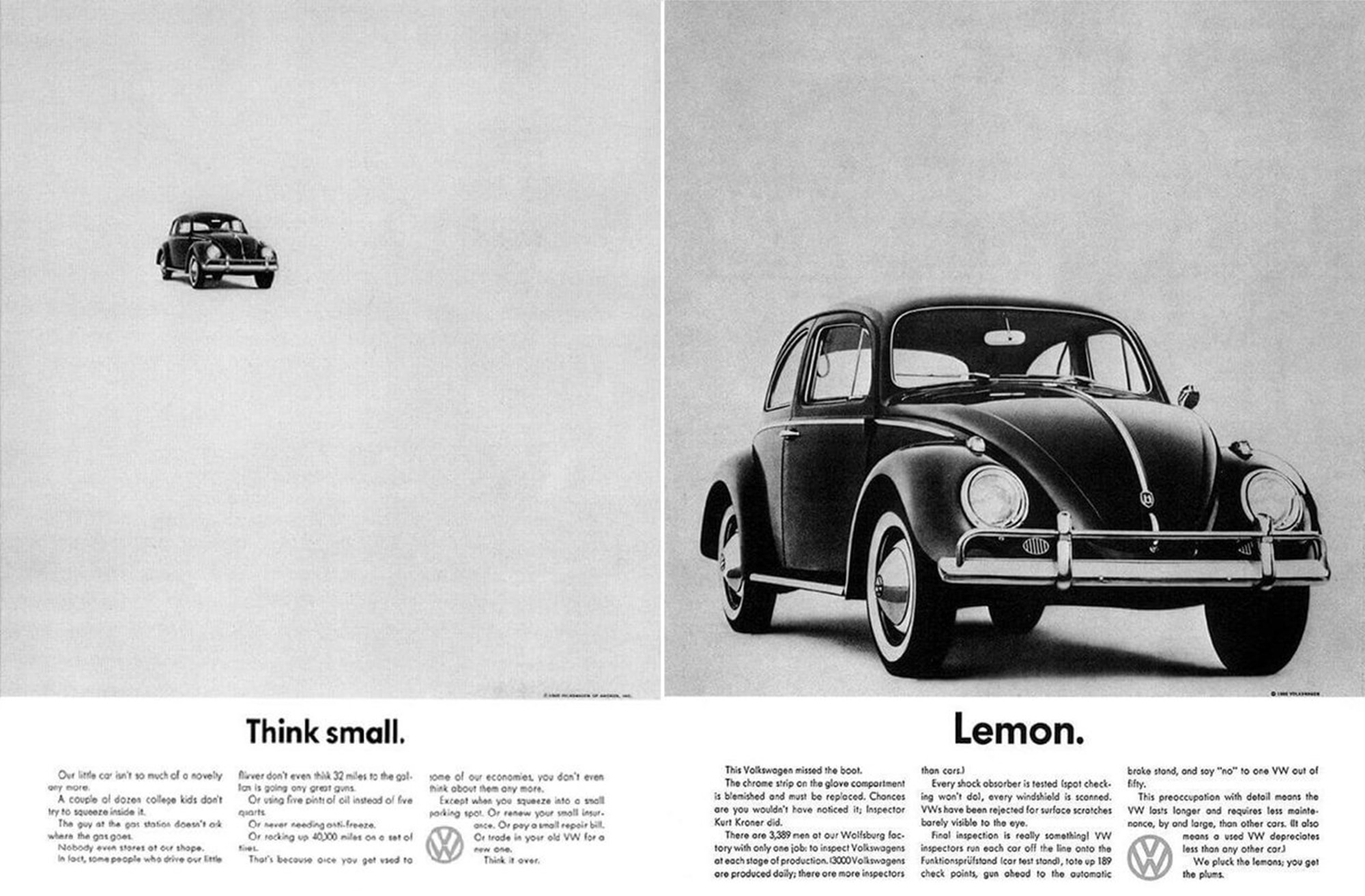
One advertising campaign stood head and shoulders above the rest because of its worthiness, though, and became as much of an icon in creative circles as the car it had been tasked to promote. The New York ad agency Doyle Dane Bernbach (DDB) had been given the account for the Volkswagen Beetle, then a car which was unknown both culturally and generally. Through an extensive set of self-depreciating advertisements which used the car’s faults as benefits, the campaign’s understated look and defiantly no-nonsense copy became a landmark in the general advertising landscape.
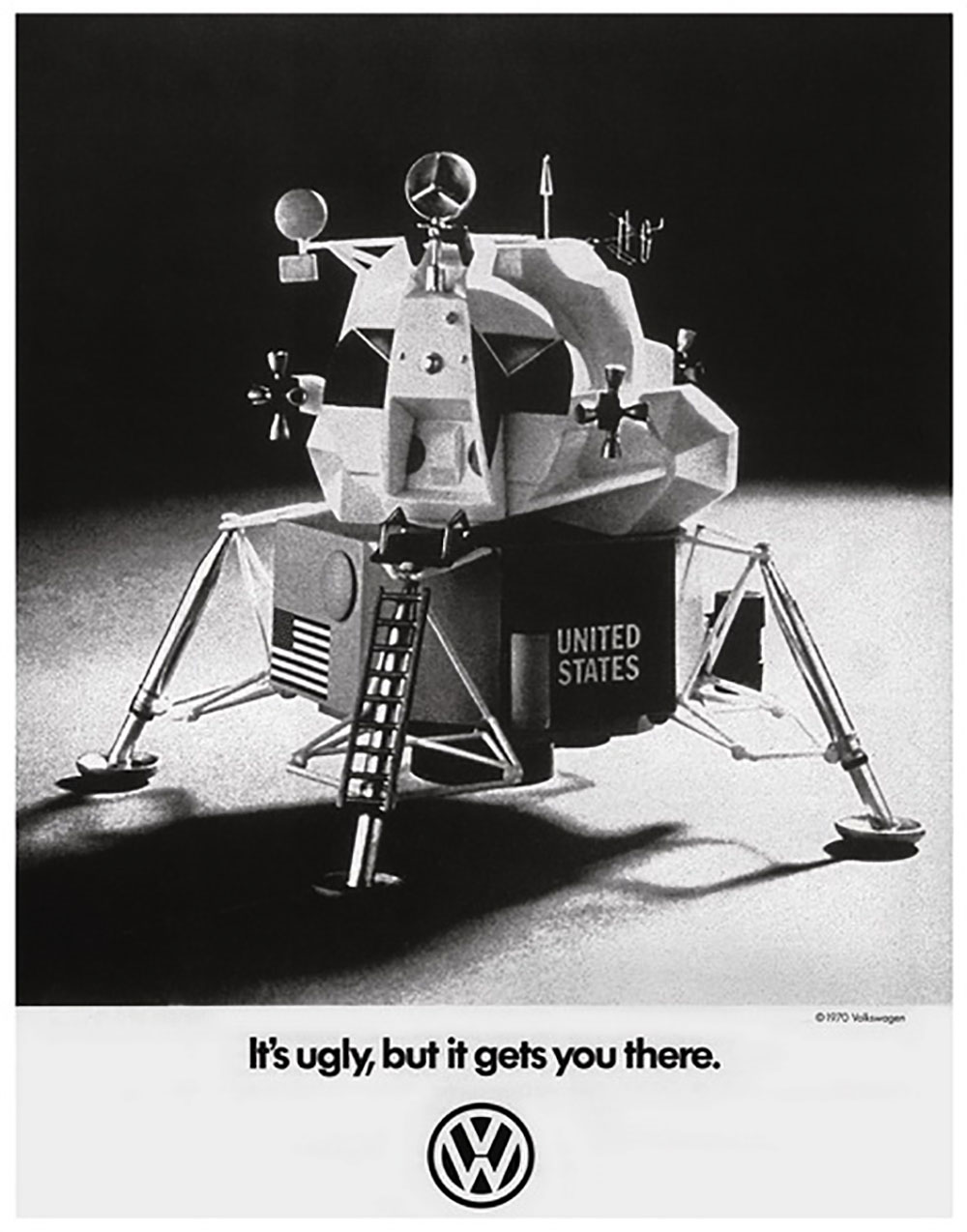
The car’s unconventional looks were played upon to great effect, with one famous ad stating ‘It’s ugly, but it gets you there’. Released at the same time as the moon landings in 1969, the Beetle wasn’t even pictured. An image of the US Lunar Module on the astronomical body illustrates the now familiar layout instead, with the Volkswagen logo the only reference to the car the ad promotes. Other famous VW ads include ‘Think Small’, whose idea was used again in 2010 with the headline changed to ‘Think Blue’, promoting Volkswagen’s BlueMotion environmental technologies.
While the groundbreaking Volkswagen campaign continued into the 1970s (and long beyond: the company still uses the agency today), another classic car icon enjoyed a series of ads which played on its virtues, or one in particular.
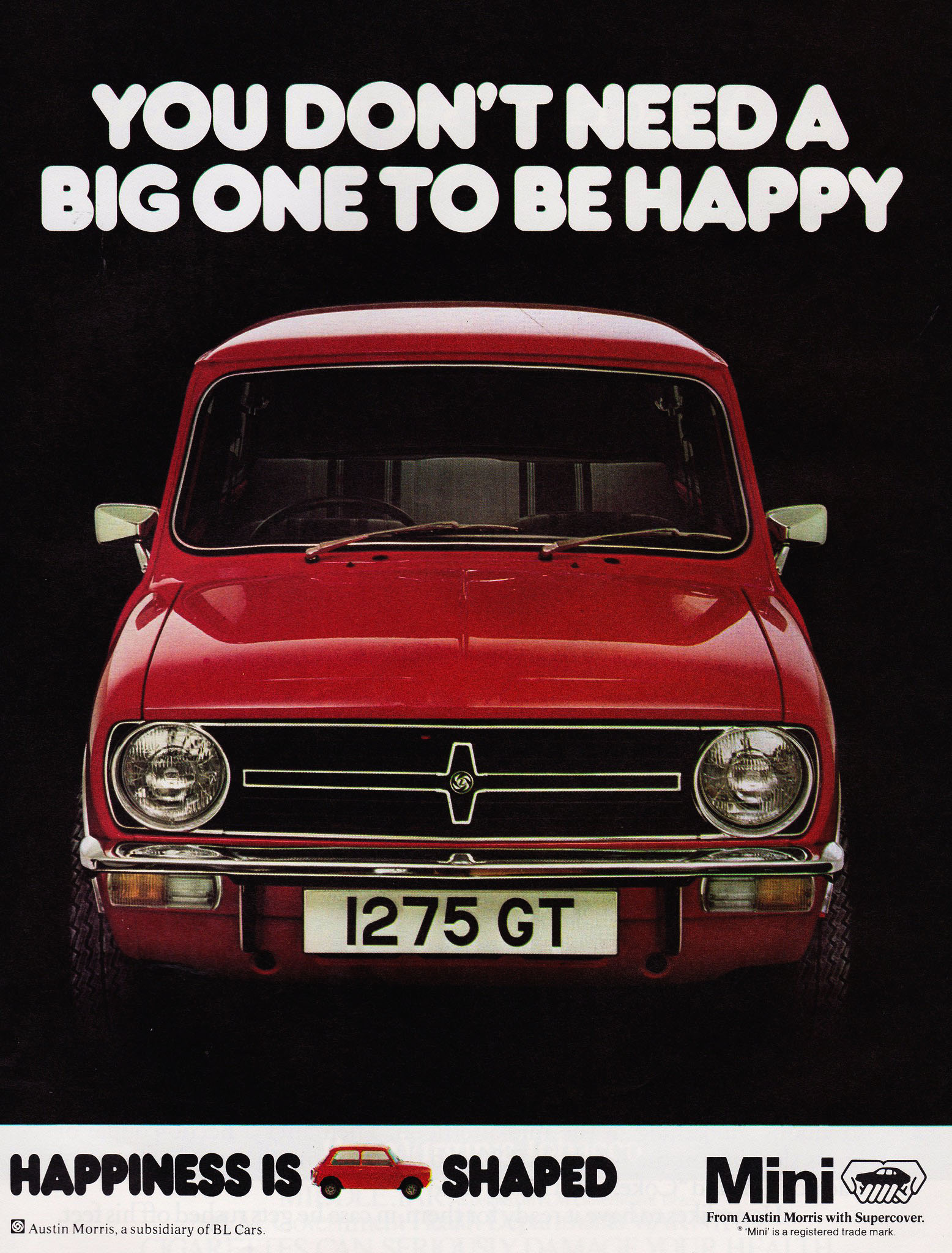
While the Morris / Austin Morris / British Leyland Mini was small, its campaign had big punchlines (and even bigger stars such as Eric Sykes and Twiggy). The pun machine was on full crank: ‘Happiness is Mini-shaped’, ‘Never has so little done so much for so many’, ‘Wake up to a little happiness’, ‘Nips in and out like Ronnie Biggs’, ‘Better in jams than strawberries’, and maybe the cheekiest, ‘You don’t need a big one to be happy’, there was seemingly no end to the maxi range of Mini slogans.
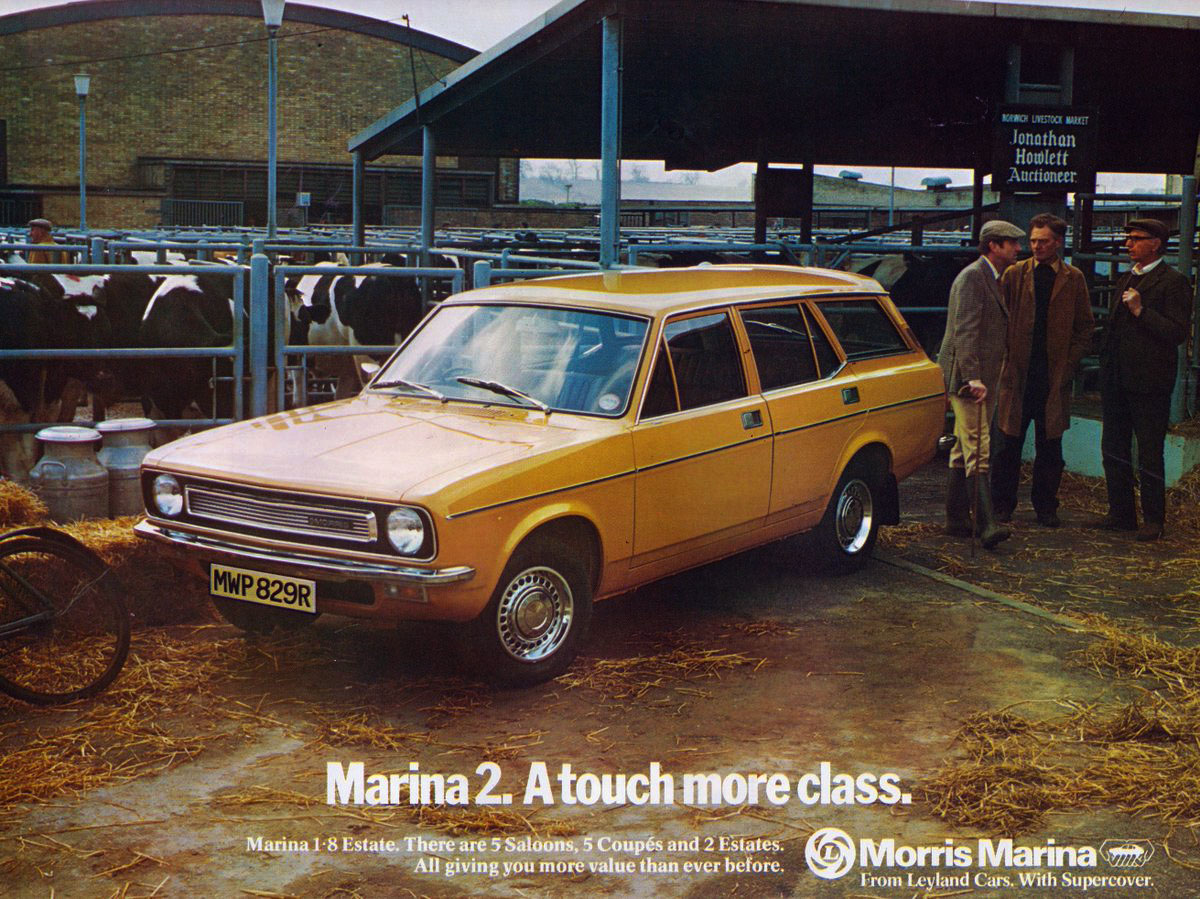
And speaking of its larger sibling, that offered ‘More of a way of life’. The sprawling giant that was British Leyland had its marketing machine in full swing during the 1970s, with the Morris Marina promising ‘A touch more class’, while the company also pointed out that the Marina was ‘Twice as beautiful as any car in its class’. It was a stunningly bold claim, especially as the car itself wasn’t. The Allegro, that stalwart of 1970s naffness didn’t escape either, British Leyland pushing the new small saloon as ‘A grand car for under a grand’. The car was also advertised as ‘The new driving force from Austin’, while later ads for racier versions offered ‘Super Vroom’ and were ‘Now even Vroomier’.

Performance and the family car were disparate bedfellows before the 1970s. But they became inseparable, as go-faster versions of family motors became commonplace, and offered both practicality and pep. Triumph’s 1972 Dolomite ad proclaimed, ‘Isn’t it time you left the matt black, the stripes and the GT badges behind?’, and Vauxhall stated that its 1976 Cavalier GL Coupé would ‘Make you want to take the long way home’.

European rivals were also hot on the UK cars’ heels, with the Alfa Romeo Alfasud described as ‘About as far removed from a family saloon as you can comfortably get’. In its homeland, VW’s genre-defining Mk 1 Golf GTI was simply described as ‘Kraftwerk’ – literally a ‘power station’ – and the BMW 2002 was ‘Practical, roomy and economical. But in spite of all that, it isn’t boring’.
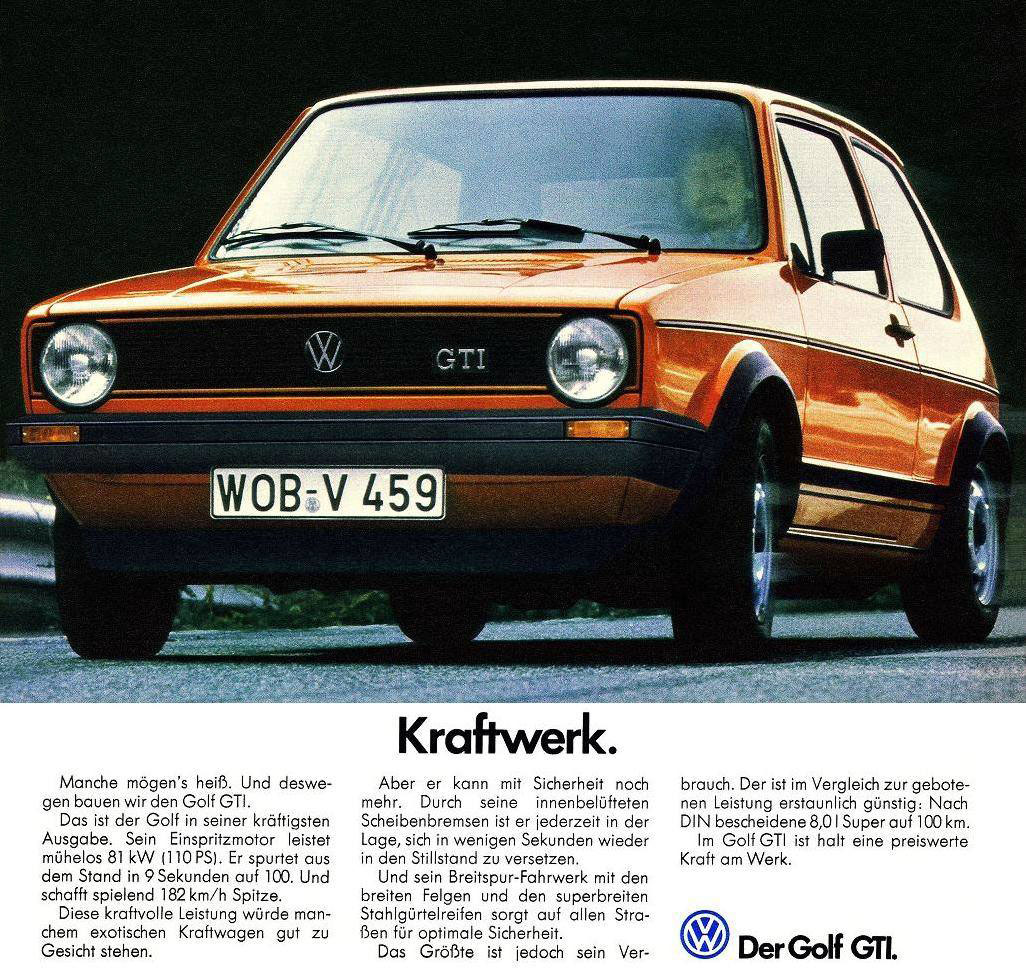
Women were still lacking power in the family car driving seat in the 1970s, and advertising bosses exploited the lack of a more feminine touch behind the wheel. Mini promoted its automatic with an image of a terrified-looking young lady gripping the steering wheel rim allied to the slogan, ‘The Mini Automatic. For simple driving’. Volkswagen asked ‘Is your wife safe on the road?’ when advertising its Polo, not stating that women were dangerous drivers, but trumpeting the car’s safety systems. Honda took a refreshingly different tack, selling its Mk 1 Civic as an engaging and economical city car, stating ‘We don’t make a “woman’s car”’.
As the decade of kipper ties moved into the decade of red braces, bringing modernity and technology, the advertising landscape sped into the fast lane of the future, too. Gone were the helpless women and conservative cars of the ’50s, ’60s and ’70s, replaced by the independent-thinking femme fatales and alluring automobiles of the ‘80s. The golden age of politically incorrect advertising may have disappeared, but in its place was another wave of brightly-coloured optimism, and one, with the advent of so many TV channels, in which the car really did become the star.
CLICK TO ENLARGE












